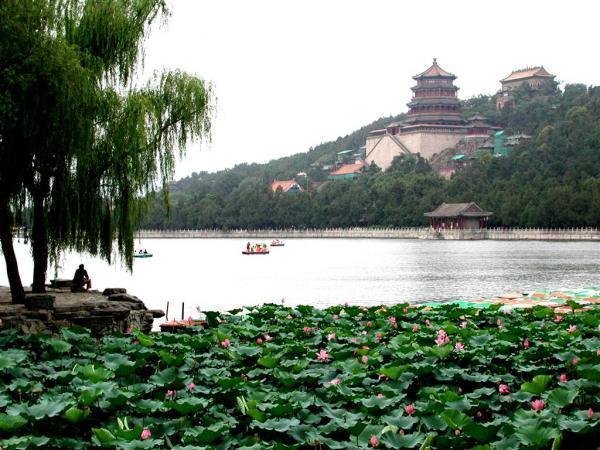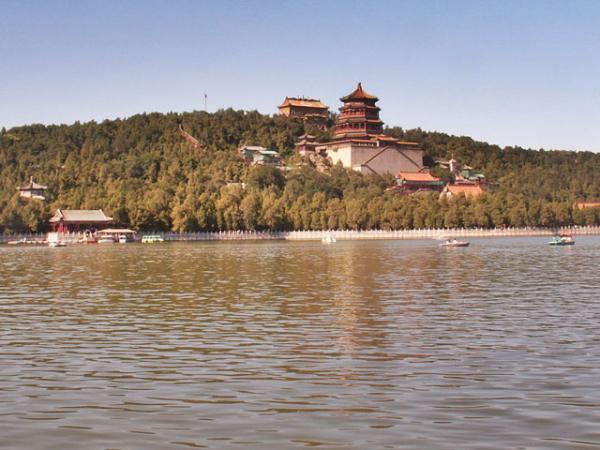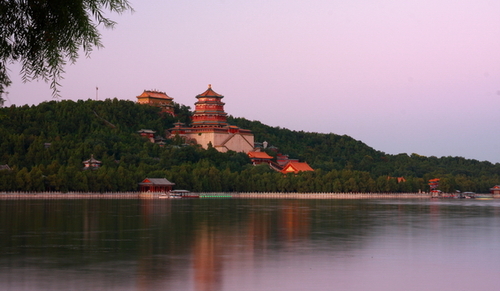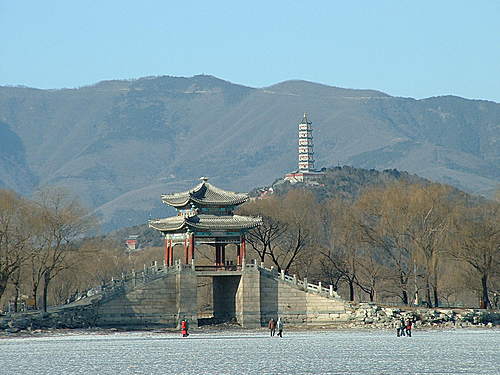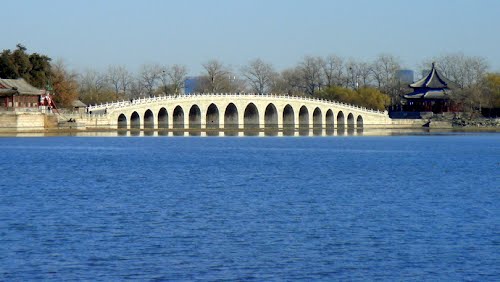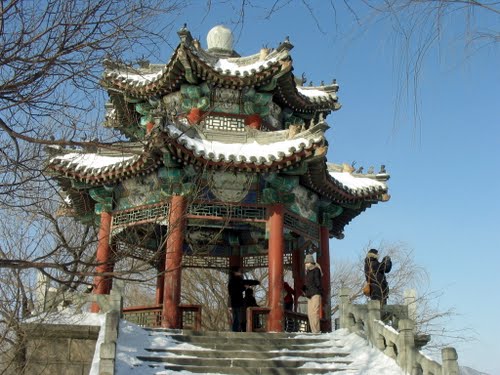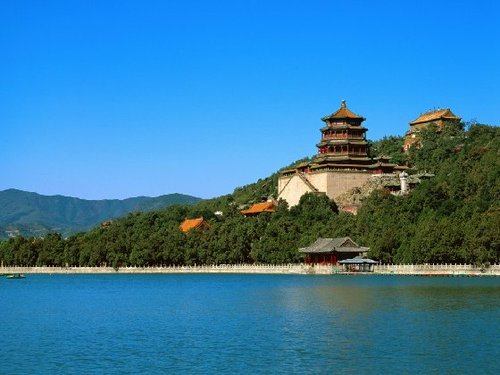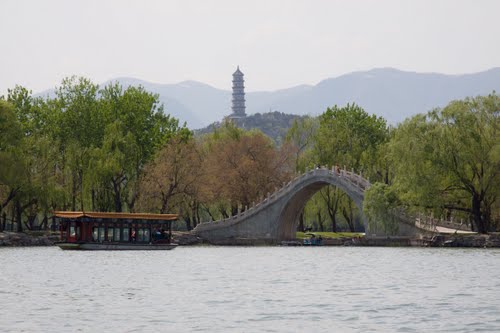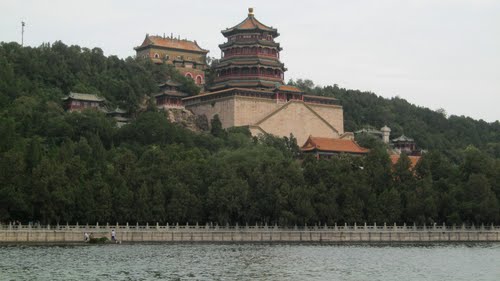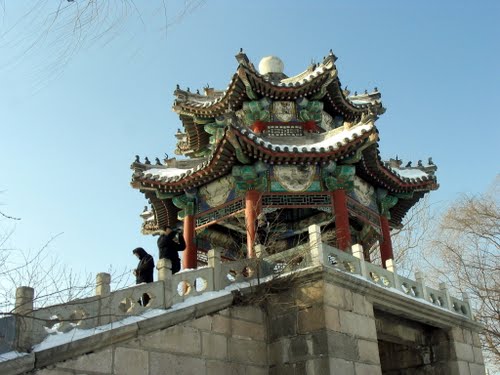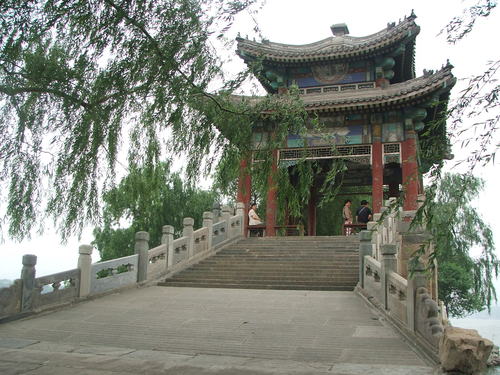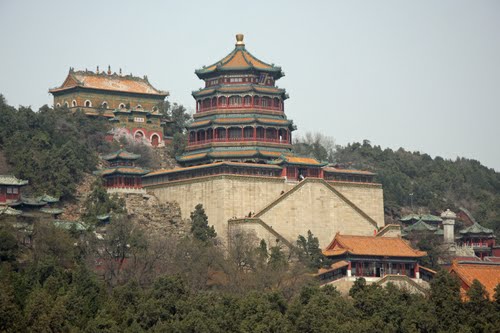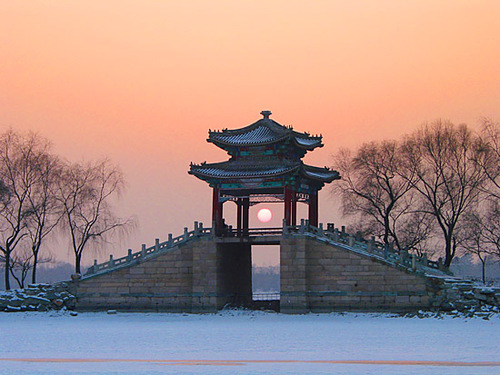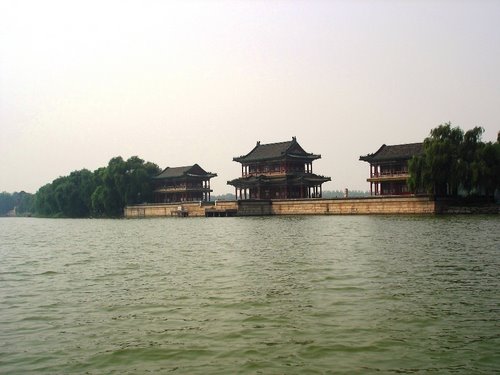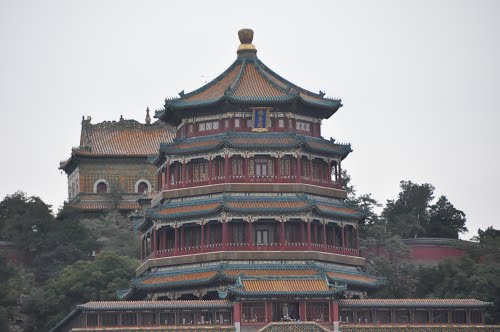The Summer Palace, is a vast ensemble of lakes, gardens and palaces in Beijing, China. It serves as a popular tourist destination and recreational park. Mainly dominated by Longevity Hill and Kunming Lake, it covers an expanse of 2.9 square kilometres, three-quarters of which is water.
Longevity Hill is about 60 metres high and has many buildings positioned in sequence. The front hill is rich with splendid halls and pavilions, while the back hill, in sharp contrast, is quiet with natural beauty. The central Kunming Lake, covering 2.2 square kilometres, was entirely man-made and the excavated soil was used to build Longevity Hill.
In December 1998, UNESCO included the Summer Palace on its World Heritage List.
History
Pre-Qing dynasty
The origins of the Summer Palace date back to the Jurchen-led Jin dynasty in 1153, when the fourth ruler, Wanyan Liang (r. 1150–1161), moved the Jin capital from Huining Prefecture to Yanjing (present-day Beijing). He ordered the construction of a palace in the Fragrant Hills and Jade Spring Hill in the northwest of Beijing.
Around 1271, after the Yuan dynasty established its capital in Khanbaliq (present-day Beijing), the engineer Guo Shoujing initiated a waterworks project to direct the water from Shenshan Spring in Baifu Village, Changping into the Western Lake, which would become Kunming Lake later. Guo's aim was to create a water reservoir that would ensure a stable water supply for the palace.
In 1494, the Hongzhi Emperor (r. 1487–1505) of the Ming dynasty had a Yuanjing Temple built for his wet nurse, Lady Luo, in front of Jar Hill, which would become Longevity Hill later. The temple fell into disrepair over the years and was abandoned, and the area around the hill became lush with vegetation. The Zhengde Emperor (r. 1505–21), who succeeded the Hongzhi Emperor, built a palace on the banks of the Western Lake and turned the area into an imperial garden. He renamed Jar Hill to "Golden Hill" and named the lake "Golden Sea". Both the Zhengde Emperor and the Wanli Emperor (r. 1572–1620) enjoyed taking boat rides on the lake. During the reign of the Tianqi Emperor (r. 1620–27), the court eunuch Wei Zhongxian took the imperial garden as his personal property.
Qing dynasty
In the early Qing dynasty, Jar Hill served as a stable for horses in the imperial palace. Eunuchs who committed offences were sent there to weed and cut grass.
In the beginning of the reign of the Qianlong Emperor (r. 1735-1796), many imperial gardens were built in the area around present-day Beijing's Haidian District so the rate of water consumption increased tremendously. Around the time, much of the water stored in the Western Lake came from the freshwater spring on Jade Spring Hill while a fraction was from the Wanquan River. If the water flow from Jade Spring Hill was disrupted, the capital's water transport and water supply systems would be heavily affected.
Around 1749, the Qianlong Emperor wanted to build a palace in the area around Jar Hill and the Western Lake to celebrate the 60th birthday of his mother, Empress Dowager Chongqing. Thus, in the name of improving the capital's waterworks system, he ordered the Western Lake to be expanded further west to create another two lakes, Gaoshui Lake and Yangshui Lake. The three lakes served as not only a water reservoir for the imperial gardens, but also a water source for agriculture in the surrounding areas. The Qianlong Emperor collectively named the three lakes "Kunming Lake" after the Kunming Pool built by Emperor Wu (r. 141–187 BCE) in the Han dynasty to train his navy. The earth excavated from the expansion works on Kunming Lake was transferred to and piled on Jar Hill, which was renamed "Longevity Hill". The Summer Palace, whose construction was complete in 1764 at a cost of over 4.8 million silver taels, was first named "Qingyiyuan".
The design of the Summer Palace was based on a legend in Chinese mythology about three divine mountains in the East Sea, namely Penglai, Fangzhang and Yingzhou. The three islands in Kunming Lake – Nanhu Island, Tuancheng Island and Zaojiantang Island – were built to represent the three mountains, while the lake itself was based on a blueprint of the West Lake in Hangzhou. Besides, many architectural features in the palace were also built to resemble or imitate various attractions around China. For example: the Phoenix Pier represented Lake Tai; the Jingming Tower resembled Yueyang Tower, Hunan, the Wangchan Pavilion resembled Yellow Crane Tower, the shopping streets were designed to imitate those in Suzhou and Yangzhou. The centrepiece of the Summer Palace was the "Great Temple of Gratitude and Longevity". There was also a Long Corridor more than 700 metres long which was furnished with artistic decorations. As the palace was not equipped with facilities for long-term staying and daily administration of state affairs, the Qianlong Emperor hardly lived there and only remained there for the day whenever he visited it.
As the Qing Empire started declining after the reign of the Daoguang Emperor (r. 1820–1850), the Summer Palace gradually became more neglected and the architectural features on the three islands were ordered to be dismantled because the costs of maintenance were too high.
In 1860, the British and French destroyed parts of the Summer Palace at the end of the Second Opium War while looting and burning down the nearby Old Summer Palace (Yuanmingyuan). The destruction of the palaces was ordered by Lord Elgin, the British High Commissioner to China, and was undertaken in response to the torture and killing of two British envoys, a journalist for The Times, and their escorts. The destruction of large parts of the Summer Palace still evokes strong emotions among some people in China.
Between 1884–95, during the reign of the Guangxu Emperor (r. 1875–1908), Empress Dowager Cixi ordered three million silver taels, originally designated for upgrading the Qing navy (the Beiyang Fleet), to be used for reconstructing and enlarging the Summer Palace to celebrate her 60th birthday. As the funds were limited, the construction works were concentrated on the buildings in front of Longevity Hill and the dams around Kunming Lake. The Summer Palace was also given its present-day Chinese name, "Yiheyuan", in 1888.
In 1900, towards the end of the Boxer Rebellion, the Summer Palace suffered damaged again when the forces of the Eight-Nation Alliance destroyed the imperial gardens and seized many artifacts stored in the palace. The palace was restored two years later.
Post-Qing dynasty
In 1912, following the abdication of Puyi, the Last Emperor, the Summer Palace became the private property of the former imperial family of the Qing Empire. Two years later, the Summer Palace was opened to the public and entry tickets were sold. In 1924, after Puyi was expelled from the Forbidden City by the warlord Feng Yuxiang, the Beijing municipal government took charge of administrating the Summer Palace and turned it into a public park.
After 1949, the Summer Palace briefly housed the Central Party School of the Communist Party of China. Many of Mao Zedong's friends and key figures in the Communist Party, such as Liu Yazi and Jiang Qing, also lived there. Since 1953, many major restoration and renovation works have been done on the Summer Palace, which is now open to the public as a tourist attraction and park.

